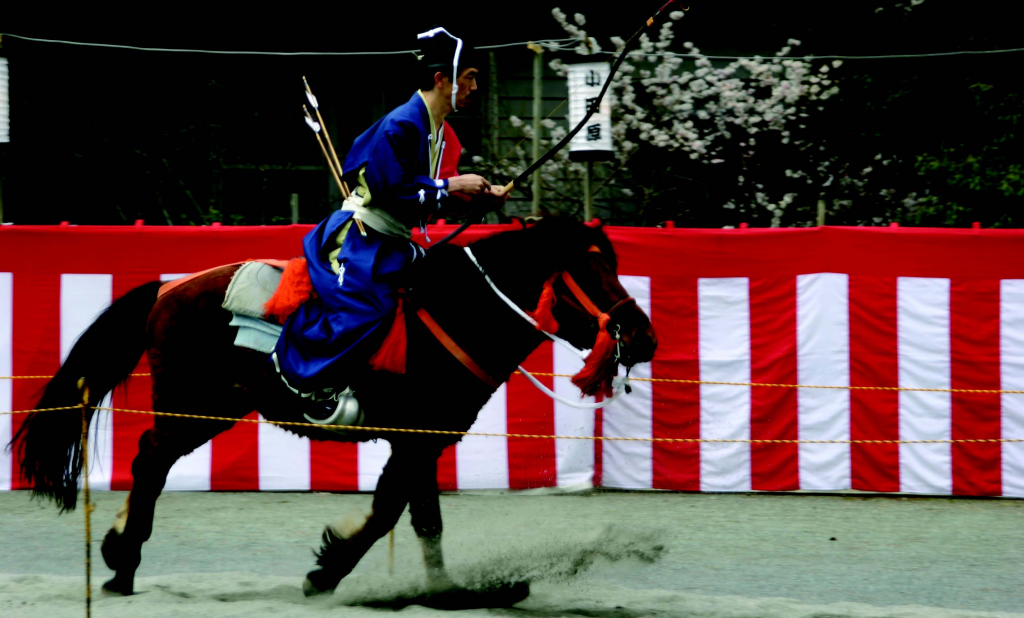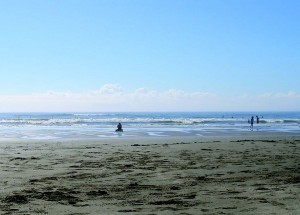by Elise Mori Just when you thought that you couldn’t possibly conjure up another indoor activity for bored children, as luck would have it, the weather thaws somewhat and the days become longer. Out you go, now, and enjoy some family-oriented activities. First up, the yearly Yabusame, where horseback archers in traditional Japanese costumes compete to shoot arrows into targets at a gallop is one not to miss. It’s all very energetic and of course incredibly Japanese. You also get to eat your own weight in yakisoba in the stalls around the main event. Held in Sumida park, this year the festival is on April 18. Later in the month, and a little further out of town, is the Noge Street Performance Festival, held on the third weekend of April in the wonderfully atmospheric streets of Noge, Yokohama (tel. 045-262-1234, http://noge-net.com/daidogei.htm). If juggling, mime, acrobatics and street performance are your thing, this will be right up your alley. For your chance to see tall ships in full sail, as well as hyper-modern yachts and state-of-the-art cruise liners, don’t miss the Tokyo Minato Matsuri (Port Festival) which is to be held on May 24 and 25 this year. www.tokyoport.or.jp/52maturi0103.htm (Japanese only) For a less structured, more outdoorsy event, head out to one of Tokyo’s nearby beaches. Spring is the season to go, as later in the year the weather becomes unbearable and the best sitesare heaving with people. Both Chiba and Kanagawa are within a couple of hours’ travel from Tokyo and there are beach styles to suit everyone. If waves are your thing, Chiba’s beaches are the ones to pick, as they face the Pacific. Hebara and Shibashita are two popular choices. To the west of Tokyo lies Kanagawa and the Miura peninsula, which also has some fun, swimmable spots, although the east side of Miura faces Tokyo Bay and I know no child of mine is putting their feet in that. On the east side are Zushi, Kamakura (yes, it has beaches too!), and the beaches of Hayama, which are fun for a dip in the sea, a picnic, and a game of frisbee.
If none of the above seem to suit your particular clan or if an unexpected bout of spring showers hits, from May 10 to 24 is the epic, wonderful Sumo in May. Guaranteed to be a day to remember, seat prices range from just ¥3,500 to over ¥50,000 for a box, and children under the age of five are admitted free. Be warned, however, that tickets are on a first-come, first-served basis and go on sale from April 10, although if you’re in the area on the days of the tournament, returns are highly likely. Visit www.sumo.or.jp/eng for further details. Exploring the possibility of visiting an Edo-style village, I came across three that seemed interesting: “Lavish” and “no expense spared,” were words one reviewer used to describe the Edo Tokyo Museum (www.edo-tokyo-museum.or.jp/english). The whole tour takes about two to three hours and if nothing else, the building itself is spectacular. Also in Tokyo is the Fukugawa Edo Museum (www.kcf.or.jp/fukagawa/english.html), which is much smaller yet definitely worth the visit nonetheless. If you’re located in the north of Tokyo or in Chiba, Boso no Mura village is another one to explore: www.chiba-muse.or.jp/MURA/english/english-information.html For more information about family activities in Tokyo, have a look at the Tokyo with Kids website (www.tokyowithkids.com/entertainment/) for some listings of tried-and-tested family activities in and around the Tokyo area. Child-friendly ongoing event listings and user feedback provide a useful resource for carers of children of all ages. For any parent or carer of children in Japan, this is a must-visit website. Another site with good information on events around the Tokyo area is the tourism site of the Tokyo Metropolitan Government: www.tourism.metro.tokyo.jp/english










